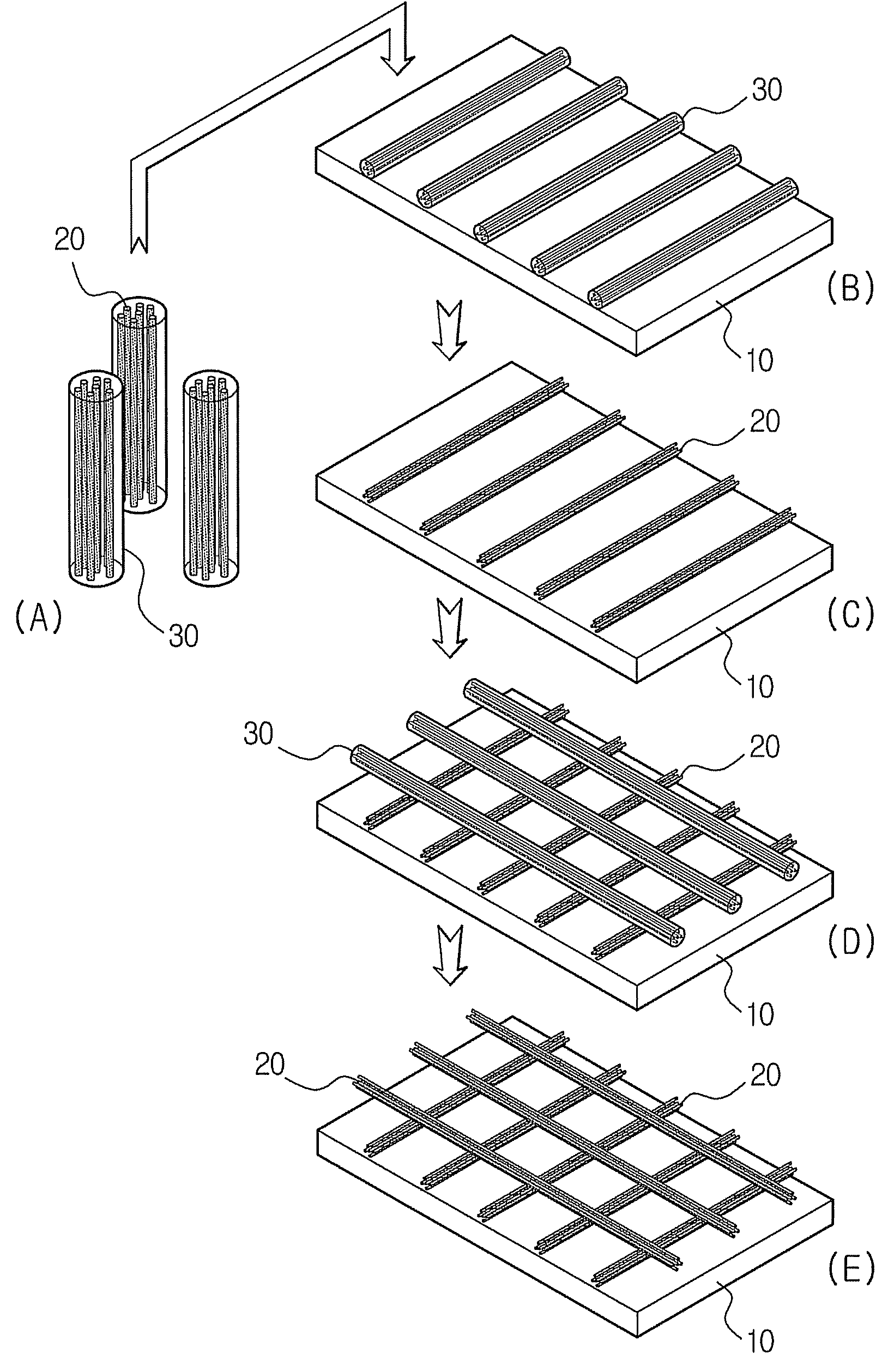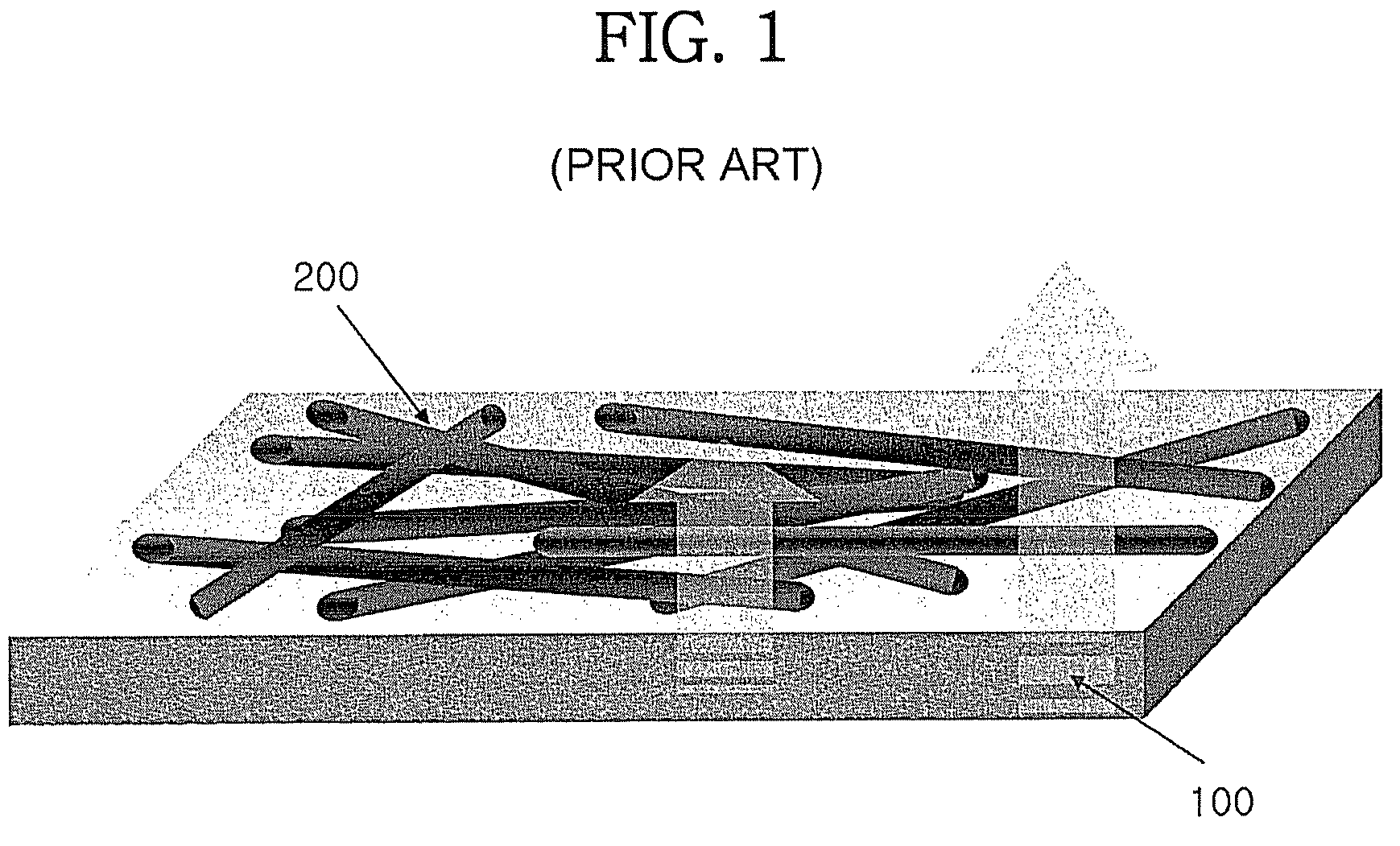Method of preparing patterned carbon nanotube array and patterned carbon nanotube array prepared thereby
a carbon nanotube array and patterned technology, applied in the direction of carbonsing rags, discharge tubes/lamp details, nanoinformatics, etc., can solve the problems of poor adhesion or electrical conductivity, the ito filled system cannot match the electrical conductivity of a continuous ito film, and the expected adverse effect on the control of conductive properties
- Summary
- Abstract
- Description
- Claims
- Application Information
AI Technical Summary
Benefits of technology
Problems solved by technology
Method used
Image
Examples
example
[0080]A CNT-dispersed chloroform solution was injected into the channels of porous templates in an amount the same as the volume of the porous channels using capillarity. The procedures of filling the channels with the CNTs using capillarity and then drying the solvent were repeated one or more times, depending on the desired CNT concentration.
[0081]The drying process was conducted in an oven at 150° C. for 6 hours or longer. A 0.2 wt % CNT / chloroform solution was supplied into the channels of silica porous templates having the volume of 1 cc / g. The supply and drying processes were repeated two times, after which the porous templates having the CNTs were arranged on a polycarbonate substrate.
[0082]Only the silica templates were selectively removed from the CNTs / templates arranged on the polymer substrate using a 5 wt % fluoric acid solution. On the polymer substrate having the CNTs arranged thereon, the arrangement of CNTs / templates and selective removal of templates were repeated.
[...
PUM
| Property | Measurement | Unit |
|---|---|---|
| length | aaaaa | aaaaa |
| diameter | aaaaa | aaaaa |
| diameter | aaaaa | aaaaa |
Abstract
Description
Claims
Application Information
 Login to View More
Login to View More - R&D
- Intellectual Property
- Life Sciences
- Materials
- Tech Scout
- Unparalleled Data Quality
- Higher Quality Content
- 60% Fewer Hallucinations
Browse by: Latest US Patents, China's latest patents, Technical Efficacy Thesaurus, Application Domain, Technology Topic, Popular Technical Reports.
© 2025 PatSnap. All rights reserved.Legal|Privacy policy|Modern Slavery Act Transparency Statement|Sitemap|About US| Contact US: help@patsnap.com



